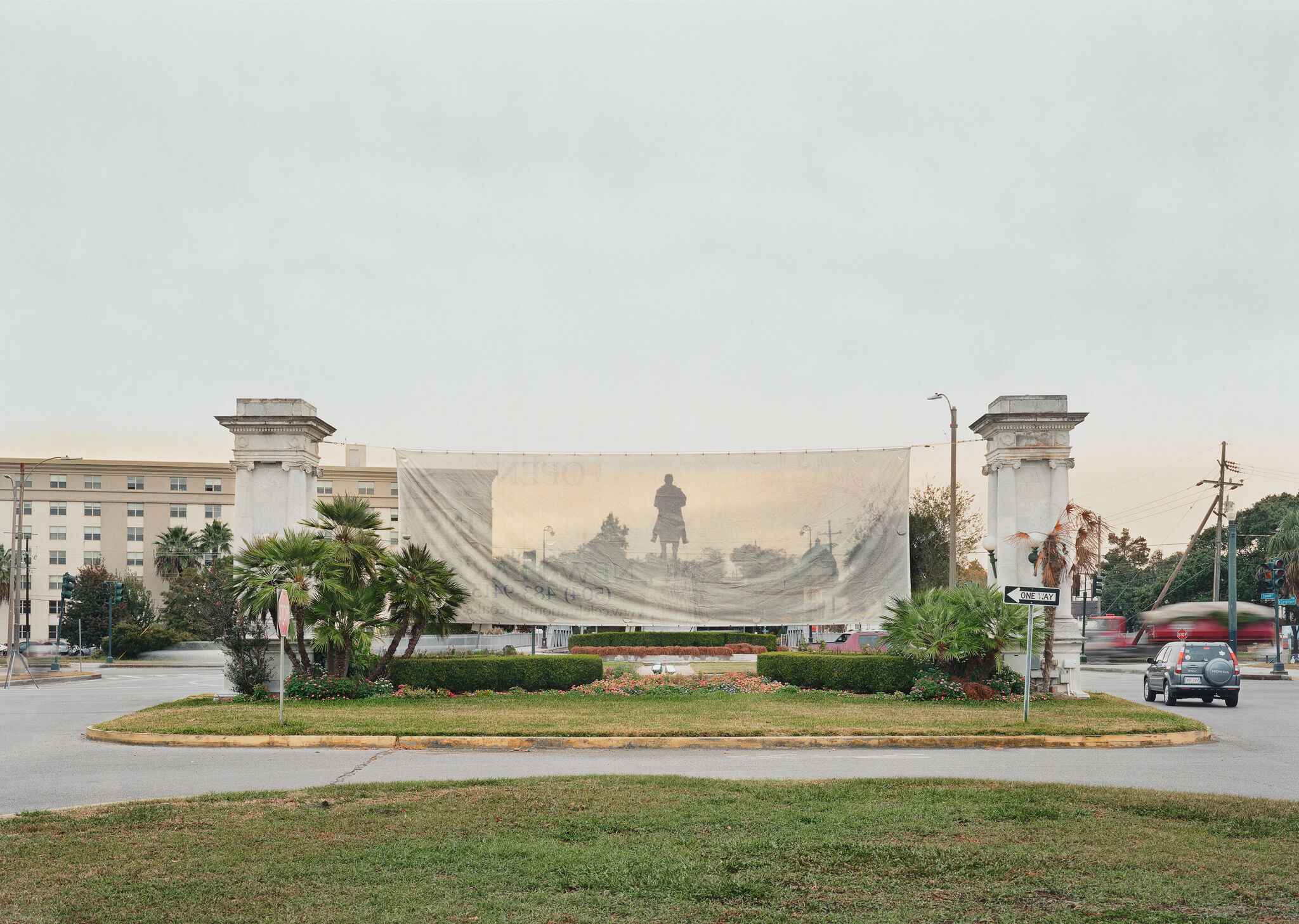Cameron Rowland, Lynch Law in America, 2021
June 8, 2023
0:00
Cameron Rowland, Lynch Law in America, 2021
0:00
Narrator: The following is an excerpt from the essay written by Cameron Rowland to accompany their exhibition Deputies at Essex Street gallery, that the five works on view here were first shown in:
Raw cotton produced by enslaved people was typically consolidated in southeastern ports and shipped by steam-powered packet ships to New York on a predetermined schedule. In New York, the cotton was inspected, resold, and repacked onto transatlantic ships. In the early 19th century New York became the primary shipping hub in the nation. The federal import and export duties collected in the New York Custom House in 1828 were “enough to pay the whole running expenses of the national government, except the interest on the debt.” When Southern ports shipped directly to Europe, this was often still brokered by Southern agents of New York firms. A committee appointed by the Alabama legislature in the early 1830s estimated that a third of the price of cotton was retained by New York merchants. In the 1850s, another group of Southerners estimated that this share had grown to 40%.
The early 19th century “merchant princes” of New York such as the Brown Brothers, the Lehman Brothers, Stephen Whitney, John Jacob Astor, Cornelius Vanderbilt, and Archibald Gracie were dependent on the Southern plantation system. Brown Brothers & Co, which now operates as the private investment firm Brown Brothers Harriman, was paradigmatic of New York firms that monopolized the trade and shipment of cotton, as well as plantation lending. Southern plantations depended on lines of credit provided by merchant firms. These lines of credit kept plantation owners in debt to their Northern merchants, giving these merchants control over the pricing and profits of plantation products. All profits of the cotton trade were extracted from the life of the enslaved. The North outsourced the management of the plantation system to the master, overseer, patroller, and the emergent system of interstate policing.
Abolition in the North did not pose a threat to the plantation economy nor the profits the North derived from it. New York, having had the largest slave population of any state outside of the South, gradually abolished slavery within its borders while it simultaneously became the center of a national system of finance and commercial exchange based on Southern slavery. In New York, the abolition of slavery drew on the principles of individualism, competition, and the purported superior efficiency of waged labor central to the state’s capitalist ideology.
[David] Hume and [Adam] Smith also emphasized slavery’s depressive effect on the economic development of nations, a sentiment which subsequent New Yorkers would echo. Individual and national industry only progressed if workers received compensation commensurate with their efforts. Slaves, as Smith elaborated, lacked reasons to work harder, more efficiently, or more inventively. Masters, moreover, paid for the care and discipline that free people would have to manage for themselves. Free persons, moreover, handled these expenses more efficiently.
In 1799 New York State declared that children born to enslaved parents after July 4th of that year would be free. Only in 1817 did the state set the date for final emancipation: July 4, 1827. Slave owners considered slave life to be most valuable between the ages of 20 and 40. The 28-year process of gradual emancipation allowed slave owners to retain the most valuable years of their slaves’ lives without having to support them in old age or having to support their children, who held no promise as future property.
Abolition in the North increased the number of representatives from Northern states in the House without destabilizing white political power. This was possible because free Black people were counted as a whole person rather than three-fifths of a person in the calculation of congressional representation, but free Black people were still severely restricted from voting. In New York, only free Black men with $250 dollars of taxable property could vote until 1870. In the early 19th century, Connecticut, Pennsylvania, and New Jersey all repealed their 18th century free Black voting provisions. At the same time, policing in the North was expanded to maintain the racial order that slavery was predicated on and to protect the property it produced. The Northern states that abolished slavery were the first to create professional police forces. The New York City Municipal Police Department was the first in the country.
In Inheritance.


